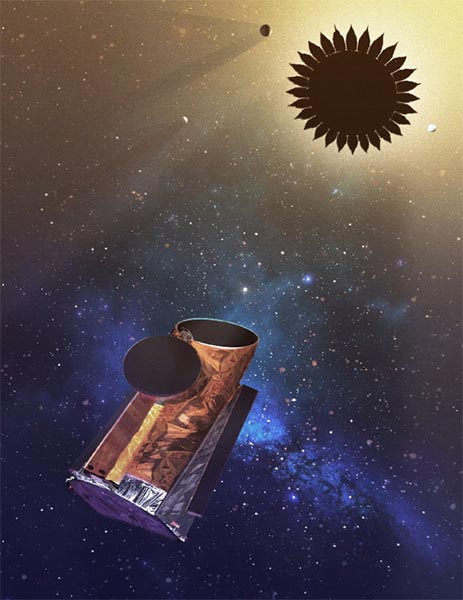NASA will launch new space telescope into space to find 'second earth'
With the current state of climate change becoming more and more complex, environmental disasters occur continuously, natural resources are exhausted and the population is growing rapidly on the earth as today, finding a new planet life to prepare for a future 'home-shift' is no longer the only idea that exists in science fiction movies.
NASA is the first organization to express its ambition to realize this idea. The US space agency recently proposed a plan to launch a state-of-the-art space telescope into space to do so. This telescope, called the Habitable Exoplanet Observatory (HabEx), takes on its responsibility to search for a second Earth, where humanity can move to in the future.
'Our goal is to see if modern technology can help us find a planet similar to Earth - a possessive planet eligible for life. Although we have found many planets accessible outside the solar system, to date, none of the planets have been identified with the necessary elements for human habitation. ' , said Professor Scott Gaudi, a researcher from Ohio State University.
HabEx is a new space telescope model developed by NASA, similar to the Hubble Space Telescope, but equipped with a much larger lens with a width of 4m (compared to Hubble's 2.4m). HabEx will also be equipped with a radiation shield according to the origami philosophy - a 52-meter-wide disc will be folded into a tight spiral, which can be ejected into a flower shape. This device is responsible for blocking light, solar radiation from nearby stars, allowing the telescope to detect weak light emitted from more distant stars, providing greater insight into the air. space.

The HabEx project is divided into 3 phases with 3 clear goals.
- Stage 1: Search for nearby planets.
- Stage 2: Draw out diagrams of nearby planetary systems and clusters and search for each individual planet in it.
- Stage 3: Discover the far reaches of the universe.
Follow TipsMake.com's Space Science section to read new articles regularly.
You should read it
- NASA's space telescope finds three new planets with rare features
- NASA announces 10 new 'copies' of Earth that we now know
- 7 future historic space missions of NASA
- NASA launched the application to help users take selfie photos in space, invite experience
- Travel space with splendid images of the universe
- Admire 10 priceless photos taken by NASA's Spitzer telescope
- Earth is light despite receiving 43 tons of dust from other planets every day
- NASA wants to make spacecraft parts right on low Earth orbit
- Explore the universe through 5 NASA websites
- Discovering a new planet with all the conditions to make a new place for humanity
- NASA announces a stunning series of GIF images that capture the historic moments of the aerospace industry
- Discovering another 'super Earth' can appear to live only 21 light-years away
May be interested

Astronomers discovered a 'candy cane' in the center of the Milky Way

What is a lunar eclipse? Lunar eclipse occurs when?

Detecting UGC 2885, a giant spiral galaxy, 2.5 times larger than the Milky Way galaxy

One of the brightest stars in the sky is about to explode

Shocking discovery in astronomy: 3 supermassive black holes in the same galaxy

Admire the special image of galaxy NGC 3175 taken with the Hubble space telescope






 NASA's space telescope finds three new planets with rare features
NASA's space telescope finds three new planets with rare features Admire 10 priceless photos taken by NASA's Spitzer telescope
Admire 10 priceless photos taken by NASA's Spitzer telescope The Hubble Space Telescope: A Retrospective With Dr. Steven Hawley
The Hubble Space Telescope: A Retrospective With Dr. Steven Hawley NASA successfully launched the James Webb space telescope, a 'time machine' that gives us a look into the past of the Universe
NASA successfully launched the James Webb space telescope, a 'time machine' that gives us a look into the past of the Universe NASA announces 10 new 'copies' of Earth that we now know
NASA announces 10 new 'copies' of Earth that we now know NASA launched the application to help users take selfie photos in space, invite experience
NASA launched the application to help users take selfie photos in space, invite experience